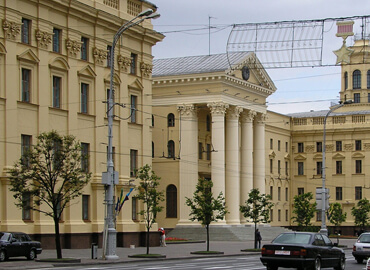The study, which is based upon regular monitoring and analysis, shows that there have been significant changes for the worse in both quantitative and qualitative terms in Russia-backed anti-Belarusian propaganda in the past two years, namely:
- The number of online resources which regularly publish items related to Belarus and contain disinformation, propaganda narratives and hate speech has increased severalfold (to about 40 fairly active sites);
- Over the past two years, several new active outlets of disinformation and hate speech which are entirely devoted to events in Belarus have appeared online. Their number currently stands at about 15. Earlier, the primary sources of disinformation about Belarus were Russian websites with a broad information agenda, which only partly focused on Belarus;
- A fully-fledged coordinated network of regional online portals with regular publications containing hate speech against various social, political, religious, and professional groups of the Belarusian population began its activity in 2018. Publications use aggressive, chauvinistic rhetoric, sometimes openly questioning the existence of an independent Belarusian ethnic group and language, discrediting and distorting the history of Belarus;
- The leaders of a number of the most active sources of disinformation and propaganda narratives on Belarus periodically using hate speech are associated with a Russian CIS-EMO organization with a very ambiguous reputation and the «Soyuz» («Union») civic initiative formed in 2018. They also have at least an indirect connection to Russia’s Embassy in Belarus thanks to their membership on the Coordinating Council of the Leaders of the Belarusian Public Associations of Russian Compatriots (KSORS).
The content of this study is as follows:
- Classification of disinformation and propaganda sources concerning Belarus;
- Analysis of the features of the regional disinformation network, the establishment of which was finalized in 2018;
- Review of examples of hate speech regarding various groups of the Belarusian population in the materials of the regional disinformation network;
- Review of offensive statements about the Belarusian people, their culture, language, and history published by the regional disinformation network in the first quarter of 2019;
- Top-15 most incongruous statements by the regional disinformation network during the first quarter of 2019;
- Analysis of individuals and organizations behind some of the most aggressive outlets of anti-Belarusian propaganda, disinformation, and hate speech.












